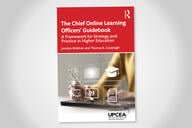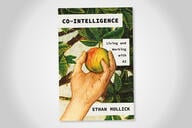You have /5 articles left.
Sign up for a free account or log in.
This conversation is with the authors of the chapter “Recentering Relationships: What We Learned From Building Closeness at a Distance” in our new co-edited book, Recentering Learning: Complexity, Resilience and Adaptability in Higher Education (JHU Press, 2024). The book (in paper and ebook form) is available for order from JHU Press and on Amazon.
Molly Chehak is the director of digital learning at the Center for New Designs in Learning and Scholarship at Georgetown University. David Ebenbach is the assistant director for graduate student and faculty programming at the CNDLS.
Q: What main themes of your chapter would you like readers to take away and bring back to their institutions and organizations?
A: The primary takeaway is the critical importance of prioritizing relationships with students. Building meaningful connections grounded in mutual respect and trust enhances every aspect of the learning process. When relationships are strong, students engage more deeply with challenging material, seek help from instructors and peers, participate in difficult conversations, find personal relevance in the coursework, and are more likely to flourish both academically and personally.
Another important theme is rethinking the use of educational technology. Even in face-to-face teaching environments, ed-tech tools can play a pivotal role in fostering, nurturing and deepening these relationships. When used thoughtfully, these tools can bridge gaps, enhance communication and support personalized interactions that strengthen the student-instructor dynamic.
Q: What are potential opportunities and levers to recenter learning in research-intensive colleges and universities?
A: One promising avenue lies in using educational technology and learning management systems for large classes where personalized engagement can be challenging. Thoughtful integration of these tools can help improve and facilitate communication, support active learning and provide data-driven insights into individual student progress.
We have also found framing teaching practices through the lens of research to be effective. Faculty in research-intensive institutions often respond positively to evidence-based pedagogical approaches. Presenting teaching as an area of scholarly inquiry, backed by robust research, not only aligns with their professional identity but also encourages adoption of best practices. This strategy reinforces the idea that innovative teaching is both impactful and intellectually rigorous, helping to position it as a core institutional priority.
Q: How might the rapid evolution of generative AI impact the work of recentering learning?
A: One key area of impact lies in shifting how we approach the learning process itself. AI tools can be leveraged to create role-based prompts or simulations that engage students in active problem-solving and scenario-based learning. These tools can also act as study aides, effectively functioning as TAs—or additions to TAs and/or faculty office hours—to reinforce course concepts or clarify areas of confusion. For example, generative AI has the potential to improve how students interact with course materials so that during office hours, students and faculty can focus on deeper discussions rather than repetitive clarifications. That said, there is a real concern that students may turn to AI instead of engaging directly with their professors. Addressing this requires faculty to reframe office hours as a space for meaningful intellectual dialogue that AI cannot replicate.
Critically, if faculty want students to engage authentically in their own learning rather than delegating tasks to AI, they must emphasize and reward the process of learning over the final product. This approach involves creating assignments that highlight iterative thinking, collaboration and personal growth rather than simply evaluating a polished result. The success of this approach hinges on trust and respect within the student-faculty relationship. As we tried to show in our chapter in Recentering Learning, when students feel valued and connected, they are more likely to adhere to the learning goals and guidelines set by their instructors.




